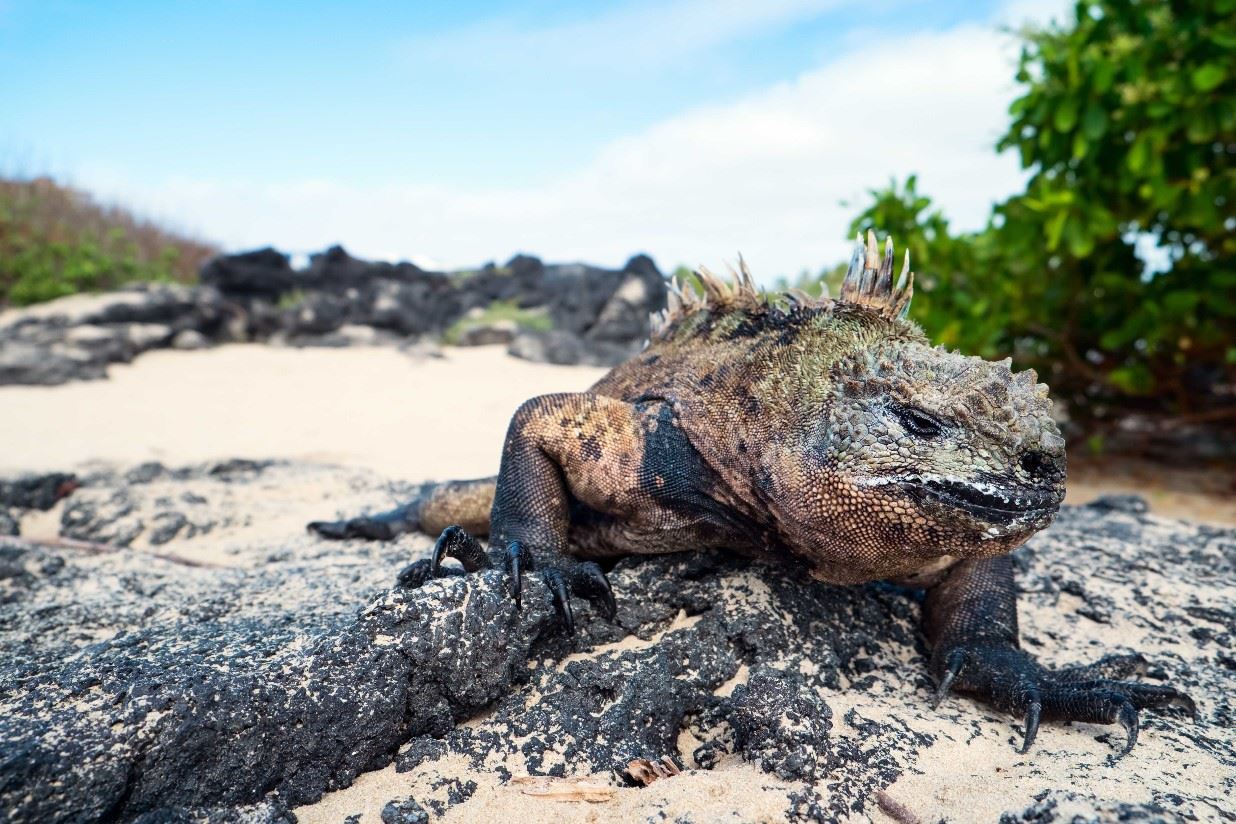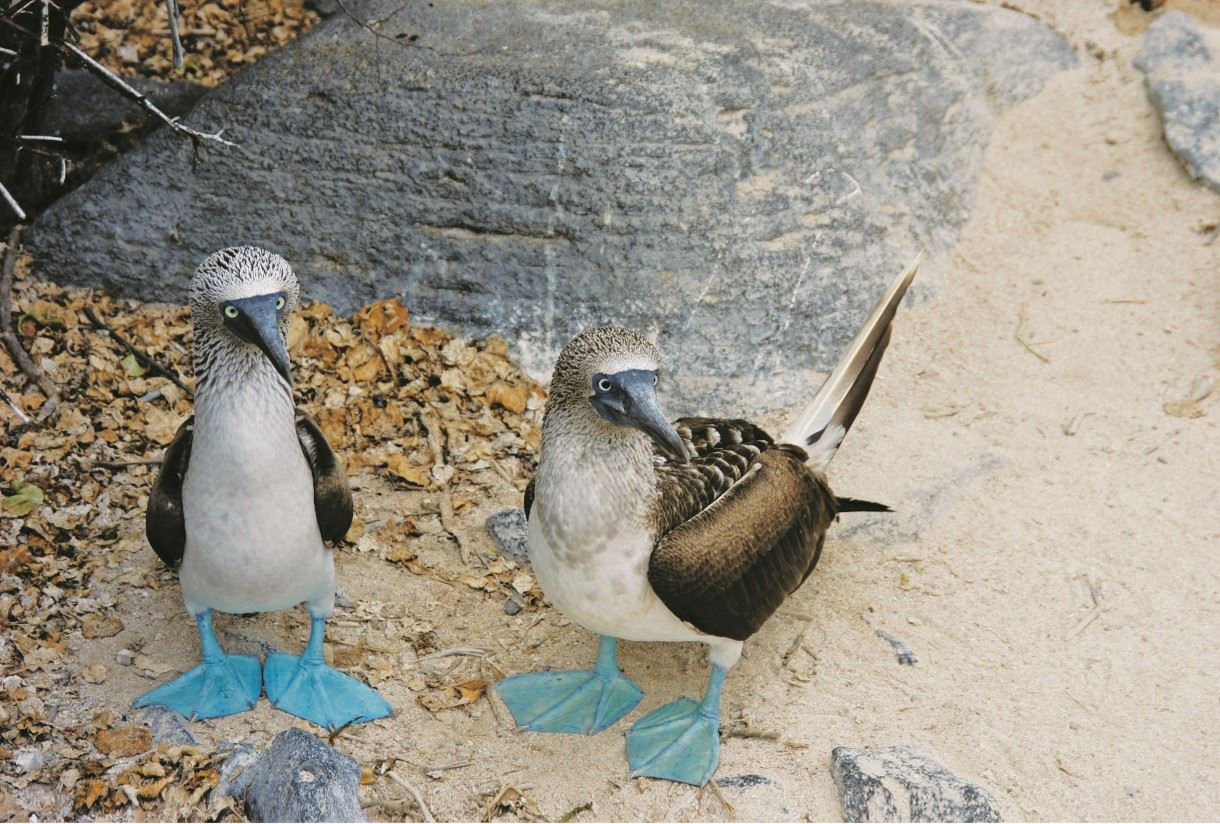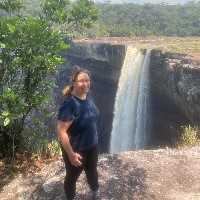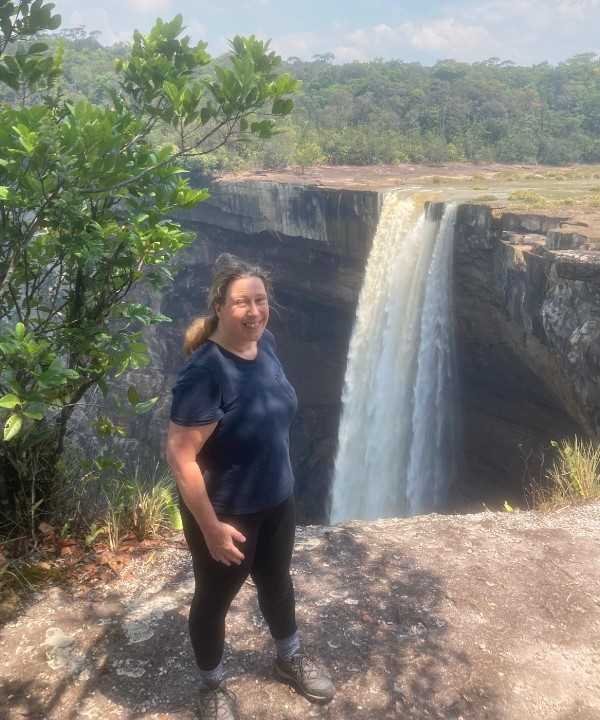The Galapagos Islands are a wildlife lover’s paradise, celebrated for their astonishing diversity and varied species. This remote Ecuadorian archipelago offers close encounters with creatures that have evolved distinct traits in response to their isolated environment. The “Big 15” species list spotlights some of the archipelago’s most iconic and unusual residents, each a testament to the uniqueness of the Galapagos.
1. Galapagos Giant Tortoise
The giant tortoise is one of the most iconic residents, known for its slow pace, unique shell shapes, and incredible longevity of over 100 years. Each island has distinct tortoise populations, each evolved to thrive in its specific environment.
-
Where to Spot: Santa Cruz, Isabela, and San Cristobal Islands
-
Did You Know? Giant tortoises can survive for months without food or water, storing reserves in their large shells.

2. Marine Iguana
The marine iguana, the only sea-going lizard in the world, feeds on underwater algae and has special adaptations for this lifestyle, including a salt gland for expelling excess salt and an ability to regulate body temperature.
-
Where to Spot: Fernandina and Española Islands
-
Responsible Tourism Tip: Admire these unique reptiles from a respectful distance, especially when they are basking on the rocks to warm up.

3. Galapagos Land Iguana
Distinct from their marine counterparts, land iguanas prefer dry, arid landscapes and feed mainly on prickly pear cactus, an important water source.
-
Where to Spot: South Plaza and Santa Fe Islands
-
Did You Know? Land iguanas can go long periods without fresh water, relying on the moisture in their cactus diet.

4. Blue-Footed Booby
Famous for their bright blue feet, blue-footed boobies perform fascinating courtship dances to attract mates. Their quirky, expressive rituals make them a must-see for visitors.

5. Nazca Booby
The largest booby species in the Galapagos, Nazca boobies are often found nesting along rocky cliffs, making for a striking scene against the sea backdrop.
6. Red-Footed Booby
The rarest of the booby species, red-footed boobies nest in trees and can be identified by their red feet and blue beak—a unique sight for bird lovers.
7. Galapagos Penguin
The Galapagos penguin, the only penguin species found north of the equator, has adapted to the island’s warmer climate, often seen darting through the water.
-
Where to Spot: Fernandina and Isabela Islands
-
Responsible Tourism Tip: To avoid disturbing them, stay a safe distance when snorkelling nearby.
8. Flightless Cormorant
A marvel of evolution, the flightless cormorant’s wings have adapted to suit its aquatic life, making it a strong swimmer rather than a flyer.
9. Galapagos Sea Lion
Playful and curious, Galapagos sea lions are often seen basking on the beaches or swimming alongside snorkellers. Their sociable nature adds a touch of charm to any encounter.
-
Where to Spot: San Cristobal and Española Islands
-
Responsible Tourism Tip: Respect their space when they’re resting ashore, especially pups and mothers.

10. Galapagos Fur Seal
Smaller and more reserved than sea lions, fur seals seek shade in rock crevices during the day. Nocturnal in nature, they are typically seen out and about as the sun goes down.

11. Waved Albatross
With their grand wingspans and remarkable gliding ability, waved albatrosses are mesmerising to watch. These seabirds return annually to Española to breed and engage in elaborate courtship dances.
12. Magnificent Frigatebird
The aptly named magnificent frigatebird can be spotted with a bright red throat pouch inflated during courtship. These agile flyers are known for aerial “piracy,” stealing food mid-air from other birds.
13. Galapagos Hawk
As the islands' apex predator, the Galapagos hawk is both a skilled hunter and a symbol of the unique Galapagos ecosystem. Endemic to the islands, it preys on small animals and birds.

14. Short-Eared Owl
Uniquely adapted to hunt during the day, this stealthy predator can often be seen on Genovesa, where it preys on small birds. Its natural camouflage and quiet flight make it a challenging yet rewarding sight.
-
Where to Spot: Genovesa Island
-
Photography Tip: Keep your camera ready on quieter trails, where they often perch unseen.
15. Scalloped Hammerhead Shark
For divers, few sights are as impressive as a school of scalloped hammerhead sharks gliding through the depths. These large, graceful sharks are typically found near Wolf and Darwin Islands.
-
Where to Spot: Wolf and Darwin Islands (best accessed by dive tours)
-
Responsible Tourism Tip: When diving, stay calm and avoid rapid movements to keep the encounter safe and respectful for the sharks. Always dive with a professional.
Experience the Wonder of the Galapagos
Each of these “Big 15” species brings the Galapagos' unique ecosystem to life, a destination famously documented by Sir David Attenborough in his BBC series - Galapagos: Islands of Change. His work vividly captures the delicate balance of nature that visitors encounter. We encourage you to watch this wonderful series, as well as researching about responsible tourism before you decide to go.
Having visited twice—first with her mother and later with her young family—Sunvil’s Rose notes how the islands' appeal spans generations, making it an ideal journey for various age groups. Discover Sunvil's expedition cruises to experience these natural wonders firsthand; click here for more information on our tours.









